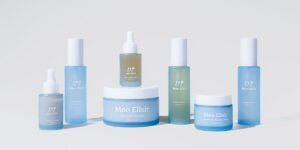Hair extensions have evolved far beyond a temporary trend to become a sophisticated blend of art and science, offering individuals the power to dramatically transform their appearance, experiment with diverse styles, and significantly boost their self-confidence. From adding luxurious length and voluminous body to introducing vibrant color without chemical commitment, extensions are a versatile tool in modern beauty. Understanding the craftsmanship involved in their creation, the precise techniques of their application, and the diligent science behind their maintenance is key to unlocking their full potential and ensuring a seamless, natural-looking enhancement that truly elevates one’s style.
Read Also: The Legacy Salon: A Fusion of Art and Chemistry in Hair Design
The Art of Transformation: Benefits and Types of Extensions
The immediate appeal of hair extensions lies in their ability to offer an instant, dramatic transformation, acting as a canvas for endless styling possibilities. They are a popular solution for those seeking to remedy short, thin, or damaged hair, or simply to experiment with a new look without the long-term commitment of cutting or coloring natural hair. Beyond aesthetics, the ultimate benefit for many users is the significant boost in confidence that comes with achieving their desired hair goals.
The “art” of extensions begins with selecting the right type and understanding their unique benefits.
Clip-In Extensions are perhaps the most popular and versatile for temporary use. They feature wefts of hair with small clips sewn to the base, allowing for easy application and removal at home. They are ideal for special occasions or daily style changes, offering instant length and volume without any long-term commitment or professional assistance. They are generally considered the least damaging.
Tape-In Extensions offer a semi-permanent option, involving pre-taped wefts that are “sandwiched” around small sections of natural hair using a specialized adhesive. When applied correctly by a professional, they lie flat against the scalp, making them virtually undetectable and very natural-looking. They offer a comfortable, lightweight feel and can typically last six to eight weeks before needing to be repositioned as natural hair grows.

Photo Credit: Unsplash.com
Sew-In Weave Extensions represent a more traditional and long-lasting choice, particularly popular for thicker hair types. The natural hair is braided into cornrows close to the scalp, and then wefts of extension hair are sewn directly onto these braids with a needle and thread. This method is secure and allows for versatile styling but requires professional installation and removal to prevent tension and potential damage to the natural hair.
Fusion (Keratin Bond) Extensions involve individual strands of extension hair pre-bonded with a keratin tip. These tips are then attached to small sections of natural hair using heat (for hot fusion) or ultrasonic waves (for cold fusion), melting the keratin bond to create a secure, discreet attachment. Fusion extensions offer a very natural look and feel, blending seamlessly, and can last for several months with proper care.
Micro-Link (Micro-Bead/I-Tip) Extensions are similar to fusion, but instead of heat or glue, small metal rings or beads (often silicone-lined) are used to attach the extension strand to a small section of natural hair. A special tool is then used to crimp the bead, securing the extension in place. This is a no-heat, no-glue option that can be adjusted as hair grows and offers natural movement.
Halo Extensions are a relatively damage-free alternative, consisting of a weft of hair attached to an invisible wire or fishing line that sits around the crown of the head, secured by the weight of the wearer’s natural hair. They are quick to apply and remove, offering instant length and volume without clips, tape, or bonds.
Beyond these core types, innovations like hybrid extensions (combining techniques) and invisible application methods (like seamless tape-ins and nano-beads) are trending in 2025, emphasizing undetectable integration for a flawless finish. The artistry lies in the stylist’s ability to choose the right method, color match perfectly, and blend the extensions seamlessly with the natural hair, creating a truly elevated style.
The Science of Hair Extensions: Materials and Application
The “science” of hair extensions encompasses the materials from which they are made and the precise, often intricate, methods of their application, both of which are critical to their appearance, longevity, and impact on natural hair health.
Hair extensions are primarily made from two types of materials.
Human Hair is considered the gold standard, offering superior quality, durability, and a remarkably natural appearance. They can be styled, cut, colored, washed, and treated just like natural hair, allowing for immense versatility. Within human hair, Remy hair is highly prized, meaning the cuticles of the hair strands are intact and aligned in the same direction, which minimizes tangling and matting. Human hair is typically sourced from donors in various regions, often through collection salons or donation sites.
Synthetic Hair is man-made and designed to mimic the look of human hair, often from materials like PVC, silicone, silk, vinyl, or acrylic. While generally more affordable, synthetic hair is less versatile; it cannot typically be heat-styled without damage, dyed, or chemically treated, and its lifespan is considerably shorter. However, advancements in synthetic hair technology are continually improving its feel and appearance.
The application methods themselves are a testament to scientific precision, designed to secure the extensions effectively while minimizing stress on the natural hair.
Clip-ins rely on pressure-sensitive clips that snap onto the root of the natural hair. Their design allows for easy attachment and removal without tools or adhesives.
Tape-ins involve pre-taped wefts applied by sectioning natural hair and pressing two adhesive wefts together, sandwiching the natural hair in between. Heat is sometimes used to strengthen the bond, but newer methods rely on pressure.
For sew-ins, after braiding the natural hair into cornrows, a curved needle and specialized thread are used to meticulously stitch the hair wefts to the braids. The tension must be just right to be secure without pulling too tightly on the scalp.
Fusion uses a heating tool to melt the keratin bond on the extension strand, fusing it with a small section of natural hair. The keratin, a natural protein, creates a durable, discreet bond.
Micro-links involve a tiny loop at the end of the extension strand threaded through a small section of natural hair, and then a microbead is slid over both. A special plier tool is used to crimp the bead flat, securing the extension without heat or glue.
The integrity of these application techniques, coupled with the quality of the hair material, determines the success and longevity of the extension wear. A thorough understanding of hair growth cycles and strand strength is also crucial for professional stylists to ensure minimal damage to the client’s natural hair.
Maintaining the Masterpiece: Care and Ethical Considerations
Once installed, the longevity and appearance of hair extensions heavily rely on meticulous maintenance and proper care, a crucial aspect often overlooked by new users. This diligent routine is essential for preserving the quality of the extensions and protecting the health of one’s natural hair.

Photo Credit: Unsplash.com
Key maintenance practices include gentle washing using sulfate-free and paraben-free shampoos and conditioners, as harsh chemicals can strip extensions of moisture and degrade bonds. Washing should be gentle, focusing on the scalp and roots without scrubbing or tangling the extensions, and often less frequently than natural hair. Careful brushing is paramount; always use a wide-tooth comb or a brush designed specifically for extensions, starting from the ends and working upwards to avoid pulling at the roots or tangling. Holding the root area while brushing can reduce tension on the attachment points.
Minimizing heat damage is also crucial. Even human hair extensions are susceptible to heat damage, so always use heat protectant sprays before styling with hot tools, and keep temperatures on low to medium settings. Opt for heatless styles whenever possible. For sleeping practices, loosely braid or tie hair in a ponytail before bed to prevent tangling and matting overnight. Sleeping on a silk or satin pillowcase can also reduce friction and damage. Importantly, never sleep with wet extensions. In terms of product selection, use lightweight, moisturizing products, avoiding heavy oils or silicones near the bonds or roots, as these can cause slippage or breakdown of the adhesive.
For semi-permanent extensions, regular adjustments with a professional stylist are crucial. As natural hair grows, bonds or tapes need to be repositioned closer to the scalp to prevent pulling and maintain a natural look.
Read Also: Hair Care for Different Textures: Finding the Right Routine for Your Unique Hair
Beyond daily care, the “science” of hair extensions also encompasses the critical and evolving aspect of ethical sourcing. With increasing consumer awareness, the industry is seeing a growing demand for transparency in the supply chain. Ethically sourced hair means the hair is obtained from donors who gave it knowingly and willingly, and who were fairly compensated for their contribution. It ensures that no exploitation, forced labor, or inhumane practices are involved in the collection, processing, and distribution of human hair. Brands committed to ethical sourcing often provide detailed information about their suppliers, ensuring fair wages, safe working environments, and adherence to human rights standards. For consumers, choosing ethically sourced extensions aligns personal style with responsible consumption, adding another layer of confidence to their beautiful new look.
The art of choosing and styling, combined with the science of application and care, empowers individuals to truly elevate their style and confidence through hair extensions, making them a sophisticated and accessible tool in the ever-evolving world of beauty.








